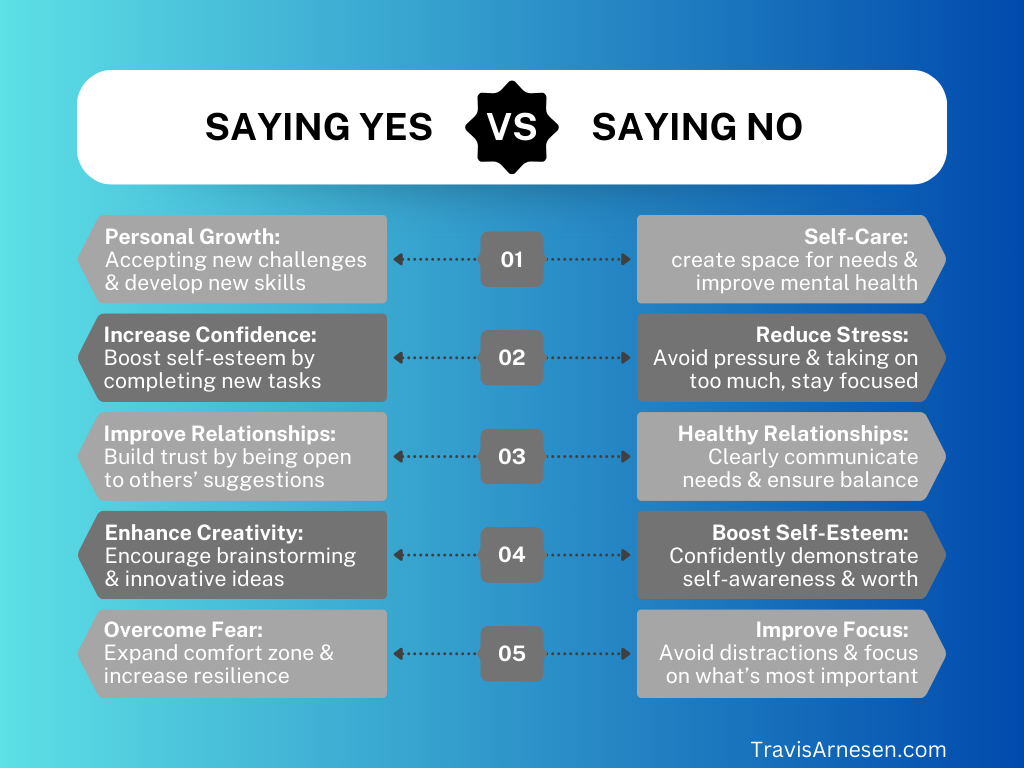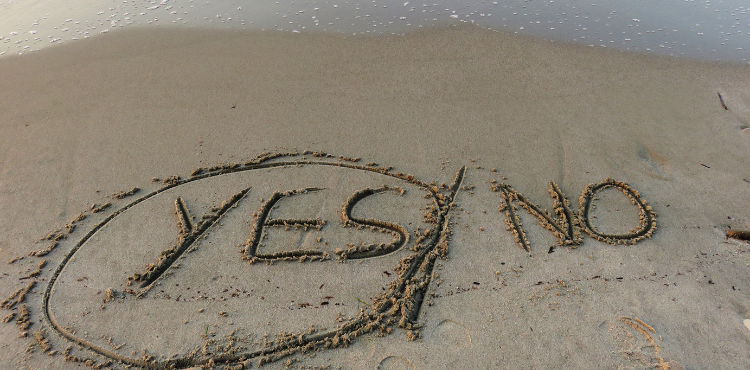In a world brimming with opportunities and obligations, the challenge of balancing the act of saying “yes” and “no” has become more crucial than ever. Each choice carries its own weight, shaping our experiences, mental well-being, and overall satisfaction in life. So, how do we navigate this delicate balance?
The Power of Saying Yes
Saying “yes” can feel daunting, especially when it pushes us out of our comfort zones. Yet, it is often in these moments of discomfort that we discover our true potential. Embracing new opportunities fosters a growth mindset—an essential attitude that encourages us to lead with curiosity and openness.
When we say “yes,” we invite experiences that challenge us and allow us to learn as we go. Whether it’s taking on a new project at work, joining a social group, or exploring an unfamiliar hobby, these experiences help us grow in unexpected ways. Even if you don’t know exactly how to approach the new opportunity, the act of saying “yes” ignites a spark of creativity and resilience.
Think of it as an adventure: you might not have a map, but each step you take will teach you something valuable. It’s okay to stumble along the way; the learning process is part of the journey.
The Strength of Saying No
On the flip side, saying “no” is equally important. It’s a powerful tool for establishing boundaries and prioritizing our needs. In a culture that often equates busyness with productivity, learning to say “no” can be a radical act of self-care.
When we say “no,” we carve out space for what truly matters in our lives. This can lead to reduced stress and improved self-esteem, as we focus on commitments that align with our values and long-term goals. Moreover, by managing our time effectively, we prevent burnout—a common consequence of overcommitting to tasks or activities that don’t serve our well-being.
Saying “no” doesn’t make you a bad person; rather, it empowers you to take control of your life and make choices that resonate with your priorities.
Striking the Right Balance
Finding the right balance between saying “yes” and “no” is an ongoing process. Here are some strategies to help you navigate this:
- Reflect on Your Goals: Before making a commitment, take a moment to consider how it aligns with your personal and professional goals. If it doesn’t serve your purpose, it’s okay to say no.
- Evaluate Your Capacity: Be honest with yourself about your current workload and mental space. If saying yes to something new will stretch you too thin, it may be time to decline.
- Practice Mindfulness: Cultivating awareness of your feelings can help you gauge whether an opportunity excites you or adds pressure. Trust your instincts.
- Start Small: If you’re not used to saying yes or no, start with smaller commitments. Gradually build your confidence in making choices that reflect your desires.
- Embrace Flexibility: Understand that it’s okay to change your mind. Life is dynamic, and your priorities may shift. Be willing to reassess your commitments regularly.
The dance between saying “yes” and “no” is a vital skill in our personal and professional lives. By embracing opportunities that challenge us and learning to set boundaries that protect our well-being, we can create a fulfilling, balanced life. Remember, it’s not just about the decisions we make but how those decisions align with our growth and happiness.
So the next time you’re faced with a choice, pause, reflect, and choose wisely. Whether it’s a resounding “yes” or a firm “no,” trust that each decision is a step toward a more authentic and empowered you.






